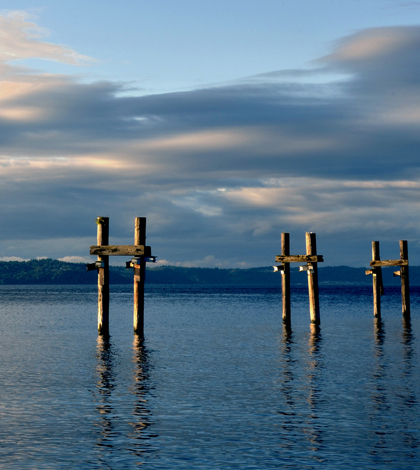Pacific Northwest Ocean Forecasting Model Put Through Paces

Tacoma Marine Park. (Credit: Flickr User Micah Sheldon via Creative Commons 2.0)
Most of us are used to the convenience of weather forecasts. They tell us everything we need to know about the current conditions nearby, as well as what things could be like in the next few days. But these are relatively minor achievements when compared with current scientific efforts to forecast our planet’s dynamics. A recent example of this involves a complex ocean forecasting model and efforts to develop a seasonal fisheries outlook for the Pacific Northwest.
Work to develop the outlook was led by scientists at the University of Washington and the National Oceanic and Atmospheric Administration (NOAA). And it is so much more advanced than just a week-long forecast.
Investigators assessed the effectiveness of a tool called the JISAO Seasonal Coastal Ocean Prediction of the Ecosystem, or J-SCOPE. It launched in the summer of 2013 with an aim to provide seasonal forecasts of conditions in the upper ocean, on an experimental basis, from six to nine months into the future.
Simulations used in the tool come from NOAA’s Climate Forecast System model. Information on biogeochemistry from the Regional Ocean Model System is also included. And the tool is updated monthly to anticipate oceanic properties in the nearshore, coastal regions such as upwelling, pH, dissolved oxygen and plankton distributions.
Over the past three years, the seasonal forecasts have been posted to the Northwest Association of Networked Ocean Observing Systems’ website. They are available there for easy comparison with long-term averages.
U. of Washington and NOAA scientists judging the effectiveness of the ocean forecasting model have found that it is especially accurate at the beginning of spring upwelling time. The tool does well with matching observations most closely below the surface. Later on in the year, around fall, more storms make conditions more difficult to predict.
Full results of the analysis are published in the journal Nature Scientific Reports.
Top image: Tacoma Marine Park. (Credit: Flickr User Micah Sheldon via Creative Commons 2.0)




0 comments